RUBBER PROCESSING FACILITIES
Internal mixers
The Millroom has a total of five internal mixers with batch capacities ranging from approximately 300gm to 35kg.
- Polylab PL2000 < 300gm
- BR Banbury (for black mixing) < 1.3kg
- BR Banbury (dedicated to colour mixing) < 1.3kg
- OOC Banbury < 3.5kg
- Intermeshing Mixer < 45kg
All of these machines have PC control to allow mixing data collection.
Mills
The Millroom has a total of 10 two-roll mills available, ranging from 100gm capacity up to two 1070mm (42 inch) mills, each with a 50kg capacity. One of these mills has pneumatically powered knives to cut strip for extrusion feed.
- 300mm x 150mm mill, situated in a clean room with vacuum ovens and associated equipment for Technically Specified Rubber (TSR) testing
- Cracker mill for the breaking down of high viscosity materials
Extruders
Two cold feed rubber extruders are available. Screw diameters are 30mm and 60mm.The 60mm extruder has a plain, barrier and pin screw that are interchangeable to vary mixing intensity in the barrel.
We have a Prism twin screw compounding extruder for continuous mixing of TPE and TPR featuring a modular barrel 40:1L/D in 4:1L/D sections with liquid injection ports, variable speed from 0 to 500 rpm, 24mm screw, PLC control system with a touch-screen interface and data logging linked to a PC.
Calender
800mm three-bowl vertical calender with take-up and lining equipment fitted is available.
Injection moulding
For rubber:
LWB Steinl Injection Moulding Press
Clamping force 1600kN, Shot volume 1000cc max
Injection pressure 180MPa, Platen size 500mm x 510mm
For thermoplastics:
Arburg Allrounder 220-90-350
Clamping force 350kN, Shot volume 225cm3
Injection pressure 132MPa, Maximum barrel temperature 450°C
A number of moulds are available for preparation of standard test pieces and products for both machines
Compression moulding presses
Ten presses both steam and electrically heated; 150mm x 150mm to 600mm x 600mm platen area, operating at pressures up to 140MPa and temperatures up to 250°C. Most standard test piece moulds are available.
For large, irregular articles autoclaves can be used.A steam-heated autoclave has chamber dimensions of approximately 760mm diameter by 1220mm long and a maximum temperature of 160°C.
Scholz pressurized, electrically heated autoclave. Maximum temperature of 150°C, approximately 1.5m diameter and 3.0m length.
Processability analyses
Monsanto Rheometers, both moving die (MDR2000 and MDR2000E) and the older oscillating disc type (ODR) operate to 200°C for analysis of the cure behaviour of finalised stocks.
MooneyViscometers to measure rubber viscosity and scorch safety.
Rubber viscosity, stress relaxation, wall slip and cure can be assessed.
The RH7Twin-Bore Capillary Rheometer evaluates the flow behaviour of materials under shear.
- Maximum shear rates 0.1 to 106s-1, Maximum load 2kg,Operating temperatures 25° to 350°C,
- Pressure transducer 0.175MPa to 200MPa
Data can be supplied either with or without the Bagley and Rabinowitch corrections. A PVT cell is also available for generating pressure-specific volume-temperature data for assessing shrinkage behaviour of materials and if needed as an input to flow simulation software. A slot die is also available.
Flow data can be generated for a wide range of materials.
Rubber bonding facilities
A dedicated laboratory is available for surface preparation of substrates for bonding with the following equipment.
- Two ultrasonic degreasing tanks specially dedicated for water based degreasing of small parts.
- Grit-blasting machine.
- Spray booth for application of the bonding system.
Several environmental cabinets are available for testing bonded joints such as humidity and salt-spray exposure testing.
Miscellaneous equipment
Dispergrader for assessment of filler dispersions rated against Cabot standards.The dispergrader is equipped with a number of different reference scales and is based on the ISO11345 method B.A set of ten image standards are available for each of the different reference scales with a numerical rating between 1 and 10.The image of a rubber compound is compared with these reference images to obtain an indication of the level of dispersion.
Pneumatic Guillotine for slicing of rubber bales.
Two Blackfriars Granulators for chopping raw rubber or plastic.
Fielder Blenders for mixing powder or crumb rubber and blending or de-dusting chemicals. 25kg batches can be processed.
We also keep a good stock of rubbers, fillers and rubber chemicals.





